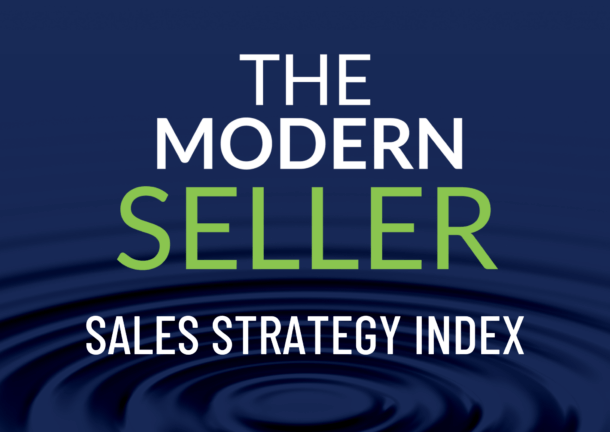"*" indicates required fields
Closing a new sale is never the end of your sales process, but rather the beginning or continuation of your customer relationship. Sales closing is the skill that improves your deal velocity and helps you achieve your sales quota.
I find often that sellers and business developers don’t have this skill mastered. Usually it’s due to a combination of mindset and skillset. Sellers see closing as complex, intimidating, and even as something to avoid. I’ve also seen situations where closing a sale is treated as a linear action, and it’s not built into the overall strategy. For example, it only becomes part of the conversation after a big presentation has taken place.
Developing your skills with the sales closing keeps opportunities from getting stuck in your pipeline, and it maximizes your sales. This article shares 3 Dos and 3 Don’ts when it comes to incorporating closing throughout your sales process.
3 Sales Closing Do’s
1. Do Use Commitments as Data.
If you work backwards from a recent win or loss, pinpoint along the way where commitments were made (or weren’t made). Commitments are the actions throughout your process that either move the relationship forward or stall it out. They are things like access to decision makers, discovery calls, document reviews, requests for information, presentation dates – anything that requires a commitment from you or the customer.
That will give you valuable data so you can fine tune your approach. There are data points in commitments that will show you where the customer was tracking with you, and where they weren’t. The more knowledgeable you become with your deal process, the better you’ll become at qualifying (or disqualifying) your opportunities.
2. Do Ask the Right Questions at Each Stage of the Sales Process.
Sellers who can ask insightful (and thought-provoking) questions can uncover and close opportunities faster. Look at each stage of your sales process and determine the questions that need to be answered. One such stage is a qualifying customer’s decision-making process. That means asking strategic and specific questions such as:
- Can you walk me through your decision-making process?
- Who else is involved in the process?
- What is your decision timeline?
- Is there a specific deadline or major event you’re working toward?
- What are the most important criteria to keep in mind when you’re considering new providers?
3. Do Have Access to the True Decision Maker(s).
This is a follow-up to the above. The only way you can close business is by having access to the right decision maker(s). When you hear the phrases “I need to involve X” or “we will make a recommendation to the board” you know right away that you don’t have the true decision makers. Sometimes it takes a little sleuthing, and it can also take a conversation or two to get the full picture. You might ask questions like:
- Who are the key stakeholders in this initiative?
- How is the initiative being funded?
- Who owns the final decision to move forward?
- If we move forward, who would be interested in hearing about our progress and milestones?
3 Sales Closing Don’ts
1. Don’t Muddy the Waters. Separate Selling, Negotiating, and Closing.
Sometimes we muddy the waters between selling, negotiating, and closing. Each is its own part of the business development process. Trying to tackle them in one fell swoop is ineffective and dangerous.
- Selling activities help you to learn about the client’s business, build key relationships, and present solutions to help them meet their key outcomes. Selling activities help the client to recognize and connect to the value in working with you.
- Negotiation begins when there is a genuine commitment from the client toward the conditional sale. You may be making adjustments to terms, to the solution, and you may be addressing key concerns.
- Closing is when the client decides to take action, you finalize the contract, and then move forward to implementation. It’s the beginning of the next steps of a long-term relationship.
2. Don’t Avoid Sales Barriers.
Objections are a constructive part of the sales process. When you know they are coming, you can be in the right frame of mind, and they won’t throw you off. Think of them as concerns to work through, and this usually means the prospect is actively processing how you can work together. A sign of a good relationship is that your decision makers and influencers will actively tell you about concerns; they will sometimes have ideas on how to work through them so you can move forward.
You’ll instill more confidence and trust if you seek objections upfront. For example, you might ask:
- What are some challenges that might surface down the road?
- What potential barriers do I need to address to earn the business?
- How will we know that we’ve solved for the concern?
Open ended questions encourage a productive conversation. The goal is to not create unnecessary barriers, but to earn trust and accelerate closing.
3. Don’t Avoid Directly Asking for the Sale.
You’ve qualified this opportunity, you’re working with the right people, and you’ve presented a strong proposal. This is often where sellers pull back, but don’t allow yourself to leave it to chance. Don’t expect the prospect to get back to you. Now is the time to lead, and they have an expectation that you ask for the business even if they don’t verbalize it.
If you don’t make a professional and clear ask for the business, one of your competitors will. Or inertia may take over and create a non-decision.
Here are a few ways to lead with the ask:
- “Now that I’ve shared my recommendations, I’d like to get your perspective. What makes the most sense to talk about further?”
- “What would you like to see happen next?”
- “Based on what we’ve discussed, I’d recommend we start here. Are you ready to move forward with the next steps?”
With this skill, preparation breeds confidence. Your own self-confidence and confidence on the part of the prospect or client. You might have a trusted colleague or coach practice with you and provide feedback about your body language, voice and pace, and the clarity of your overall message. Clarity and confidence will win the day and help you keep momentum. Your clarity and confidence translate in the customer’s mind that they are making the right choice in working with you and your firm.
To get started, prioritize and apply the closing strategies that are the best fit for your current opportunities. You’ll create the momentum you need to earn the business and creating a lasting client relationship.
More strategic selling tips are available in the first three articles of this strategic selling series: Four Skills to Grow Your Client Base , how to Identify and Build High-Impact Relationships, and Uneven the Playing Field with These Proposal Strategies.
The Strategic Selling for Professional Services online sales training program is here.
If you’re in professional services, or selling complex solutions into B2B environments, this program is ideal for both individuals and teams. The vision is to provide a platform and experience, where you can learn and apply these modern selling skills, anytime, anywhere.
It’s easy to get started, and you’ll have access to two free preview lessons. These lessons are teaching skills, they aren’t fluff introductions! You’ll take something away just in the preview that you can apply today.
Head out to learn.amyfranko.com to get more detail and your free previews.


 Our Strategic Selling signature sales training program is now available online. This online sales learning program is ideal for professional services and B2B sales. Get started with 2 free lessons.
Our Strategic Selling signature sales training program is now available online. This online sales learning program is ideal for professional services and B2B sales. Get started with 2 free lessons.